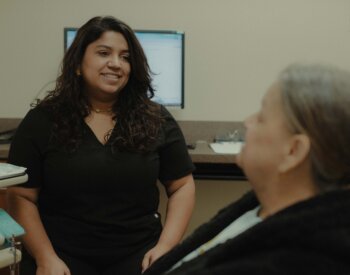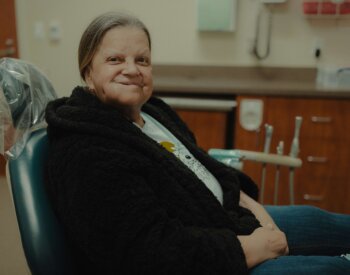Contact: Steven Lee, 210-450-3823, lees22@uthscsa.edu
SAN ANTONIO, April 25, 2025 – Nina Murray admits she was “one of those people” who rarely went to the dentist. But going, when she did, might have saved her life.
Last September, she detected what she first thought was an ulcer inside her right cheek, but it quickly turned into a hard lump and started hurting. “Something’s not right,” she told her husband. A local dentist immediately sent her to the UT Dentistry Oral Medicine Clinic at the UT Health San Antonio School of Dentistry, where she saw Tiffany Tavares, DDS, DMSc, an oral medicine specialist.
Sure enough, it was “not right.” Tavares suspected Murray had an oral squamous cell carcinoma, and she confirmed it with a biopsy.
Treatment for oral cancer, especially when more advanced, requires a multidisciplinary approach. Murray was treated at UT Health San Antonio’s Mays Cancer Center, where she underwent surgery to remove the tumor, followed by reconstructive surgery with skin grafts, and chemotherapy and radiation therapy. Now, Murray has a simple message.
“I seriously and highly urge, if you’re one of those people who doesn’t go to the dentist, please go get checked out,” she said.
April is Oral Cancer Awareness Month, and oral and oropharyngeal cancers account for more than 58,000 new cancer cases each year in the U.S. alone, according to the American Cancer Society. Early detection is crucial for long-term survival, making routine dental checkups more than about clean teeth and fresh breath.
Dentists can play a vital role in identifying oral cancer at its early stages, significantly improving the odds of their patients overcoming the condition.

“The earlier that we detect it, the fewer treatments you are likely to need,” Tavares said. “It would be great if you never developed it at all, but the best-case scenario of developing oral cancer is catching it as early as possible.”
Oral cancer can affect any part of the mouth, including the lips, tongue, cheeks, floor of the mouth, hard and soft palate or gums. Common risk factors include tobacco from the use of cigarettes, smokeless tobacco, hookah or betel quid, as well as alcohol, a chronically weak immune system or a previous history of cancer or cancer in the family.
Tavares said that radiation exposure to the head and neck area is another risk factor for oral cancer as well as certain conditions such as oral lichen planus, a chronic inflammatory disease. Additionally, exposure to human papillomavirus strains, also referred to as HPV, which sexually transmitted is a risk factor for oropharyngeal cancer. Even the outer lip is susceptible to cancer from sun exposure.
However, oral cancer also can occur in individuals with no known risk factors.
“It is important that we do not ignore oral lesions, even in the absence of traditional risk factors,” Tavares said. “Oral health care providers are in a unique position to detect oral cancers or even their precursors. While most mouth sores are harmless and often heal within a week or two, dentists pay close attention to any sores or lesions that persist for more than two weeks.”
During a regular dental checkup, dental professionals conduct a comprehensive examination of each patient’s mouth, including a visual inspection of the oral tissues. They are trained to recognize early signs and symptoms of oral cancer, which include white and red patches, ulcers and nodules, chronic sore throat or hoarseness, difficulty chewing or swallowing and swelling or numbness in the mouth or jaws.
Beyond detection, dentists are equipped to support patients throughout their cancer journey. Treatment for head and neck cancers, particularly radiation and chemotherapy, can result in significant oral complications.
Murray developed oral mucositis, a common and painful side effect that causes inflammation and ulceration of the mouth. This can interfere with eating and speaking, and may even delay cancer treatment.
One promising intervention is photobiomodulation therapy, or low-level laser therapy that reduces pain and accelerates healing which, and which Murray received at the Oral Medicine clinic to manage this complication after completing radiation. This significantly reduced her pain and helped her get back to eating foods she enjoys.
Xerostomia, or dry mouth, often occurs when radiation damages the salivary glands. It also can make speaking and eating difficult, and greatly increases the risk of cavities and oral infections. Dentists can help manage this and provide preventive fluoride therapy.
Osteoradionecrosis, the development of necrotic or dead bone, is a potential complication of radiation to the head and neck area. Dentists play a key role in both prevention and early management by addressing dental needs before radiation therapy and monitoring closely afterward.
Tavares says it’s equally important for individuals to understand how they can lower their risk for developing oral cancer, like practicing tobacco cessation in all its forms, avoiding alcohol and adopting a diet rich in fruits and vegetables. To help reduce the risk of lip cancer, avoid sun exposure, apply lip balms with SPF protection and wear hats when exposed to sunlight.
By partnering with a dentist for regular oral health care and staying vigilant to any health changes, patients are taking proactive steps to safeguard themselves against oral cancer and ensure early detection and treatment if needed.

And from the first sign of concern and continuing through treatment and beyond, dentists help patients manage pain, reduce side effects and monitor for recurrence. Oral medicine specialists in particular serve as bridges between oncology and dental care, helping navigate complications and protect quality of life.
On the path to recovering from her oral cancer battle, Murray, 63, said that while she regrets the days when she only visited the dentist occasionally, she takes comfort in her faith and in knowing that had she not reacted as quickly as she did, her Stage 2 cancer might easily have become Stage 3 or 4. Or, she might not be here at all.
“If you don’t want to lose your life,” she said, “get serious about your dental treatments. Just go.”
If you have noticed any persistent ulcers, white and/or red patches or any abnormal findings in your mouth, or if you are experiencing an oral complication of cancer therapy, speak with your doctor or dentist for a referral to the UT Dentistry Oral Medicine Clinic.
If you are a patient who has been through cancer treatment and are looking for dental providers who understand your particular dental needs, visit the UT Dentistry General Dentistry Clinic online or call 210-567-6453 to make a dental appointment today.
The University of Texas Health Science Center at San Antonio (UT Health San Antonio), a primary driver of San Antonio’s $44.1 billion health care and biosciences sector, is the largest academic research institution in South Texas with an annual research portfolio of more than $436 million. Driving substantial economic impact with its six professional schools, a diverse workforce of more than 9,400, an annual expense budget of $1.67 billion and clinical practices that provide 2.5 million patient visits each year, UT Health San Antonio plans continued growth over the next five years and anticipates adding more than 1,500 higher-wage jobs to serve San Antonio, Bexar County and the South Texas region. To learn about the many ways “We make lives better®,” visit UTHealthSA.org.
Stay connected with The University of Texas Health Science Center at San Antonio on Facebook, Twitter, LinkedIn, Instagram and YouTube.
The UT Health San Antonio School of Dentistry offers 18 degrees and programs in both dentistry and dental hygiene, world-renown faculty educators, a diverse student population, state-of-the-art clinical facilities and a distinguished research enterprise. Departments include comprehensive dentistry, developmental dentistry, endodontics, periodontics, and oral and maxillofacial surgery. Scientists collaborate with clinicians and research teams worldwide, and work across multiple medical and dental disciplines to find new treatments, advancing knowledge of oral health, biomaterials, cancer, pain and more. To learn more, visit https://www.uthscsa.edu/academics/dental.
The Mays Cancer Center at UT Health San Antonio is one of only four National Cancer Institute-designated Cancer Centers in Texas. The Mays Cancer Center provides leading-edge cancer care, propels innovative cancer research and educates the next generation of leaders to end cancer in South Texas. To learn more, visit https://cancer.uthscsa.edu.
Stay connected with the Mays Cancer Center on Facebook, Twitter, LinkedIn, Instagram and YouTube.


